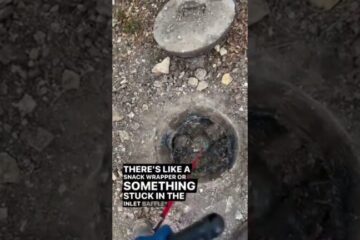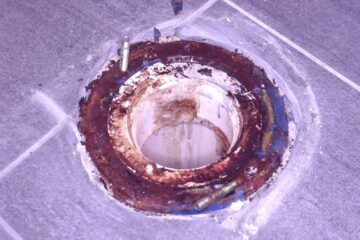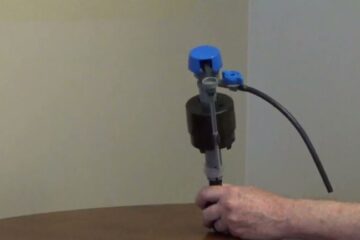In today’s water-conscious world, it has become increasingly important to find ways to conserve one of our most precious resources. When it comes to doing dishes, many of us may not realize the amount of water that we could be wasting. However, by following these simple, practical tips, you can easily reduce your water usage and make a significant impact on conservation efforts. From using a dishwasher efficiently to handwashing with mindfulness, these 10 easy methods will help you save water while still keeping your dishes sparkling clean.
Ways to Conserve Water when Doing Dishes
As part of your daily routine, doing dishes is a necessary task that consumes a significant amount of water. However, there are several ways you can conserve water while still effectively cleaning your dishes. By incorporating these water-saving habits into your dishwashing routine, you can contribute to the conservation of this precious resource. In this article, we will explore ten easy ways to conserve water when doing dishes, from using a dishpan or stopper in the sink to fixing leaks in faucets and pipes.
Use a Dishpan or Stopper in the Sink
One of the simplest ways to conserve water while doing dishes is to use a dishpan or stopper in the sink. By filling up the sink with soapy water and washing your dishes in the collected water, you can avoid running the faucet continuously. This method not only helps save water but also reduces the amount of energy required to heat the water. Remember to keep the drain closed tightly and refill the sink as needed to maintain a sufficient amount of clean water for washing.
Scrape Off Food Residue
Before loading your dishes into the sink or dishwasher, it is important to scrape off any food residue. By removing excess food particles from your plates, utensils, and cookware, you can minimize the amount of water needed for rinsing. Instead of rinsing dishes under a steady stream of water, simply use a scraper or brush to remove the larger food remains into the trash bin. This small step can significantly reduce water consumption in the dishwashing process.
Soak Pots and Pans
In order to effectively clean stubborn stains or dried-on food from pots and pans, it’s common to let them soak in water. However, this practice often leads to excessive water usage. To conserve water, fill a basin or container with water and allow the pots and pans to soak in it. By doing so, you can reduce the need for continuously running water while still achieving the desired cleanliness. Just be sure to use the soaking water sparingly and avoid letting it go to waste once you’re finished.
Wash Full Loads
Whether you’re using a dishwasher or hand washing your dishes, it is important to wait until you have a full load before starting the cleaning process. Both dishwashers and sinkfuls of dishes consume a similar amount of water regardless of the load size. By waiting until you have enough dishes to fill the dishwasher or the sink, you can maximize water efficiency and minimize water waste. Therefore, resist the temptation to start the cleaning process with only a few plates or utensils.
Use a High-Efficiency Dishwasher
If you have access to a dishwasher, consider investing in a high-efficiency model. High-efficiency dishwashers are designed to use significantly less water than traditional models while still delivering excellent cleaning results. These appliances often have sensors that adjust the water levels based on the load size, ensuring optimal water usage. By using a high-efficiency dishwasher, you can not only conserve water but also save energy and reduce your utility bills in the long run.
Use the Eco Mode or Energy-Saving Feature
Most modern dishwashers come equipped with an eco mode or energy-saving feature. By activating this setting, the dishwasher adjusts the water and energy usage to minimize waste. The eco mode typically involves shorter wash cycles, lower water temperatures, and reduced water pressure, all of which contribute to water conservation. By utilizing this feature, you can effectively clean your dishes without sacrificing cleanliness while reducing your environmental impact.
Hand Wash Dishes Efficiently
For those who prefer hand washing their dishes, it is important to do so efficiently to conserve water. Start by filling one side of the sink with hot, soapy water, and the other with cold water for rinsing. This method allows you to scrub and wash the dishes in the soapy water, and then quickly rinse them in the clean water side. Avoid allowing the water to run continuously while washing and rinsing, and be sure to turn off the tap when not in use. By following these steps, you can effectively clean your dishes with minimal water wastage.
Use a Spray Nozzle or Low-Flow Aerator
To further reduce water usage during hand washing, consider using a spray nozzle or low-flow aerator on your faucet. These devices are designed to limit the flow of water while still providing sufficient pressure for cleaning. By installing a spray nozzle or low-flow aerator, you can effectively control the water output and minimize unnecessary water usage. Additionally, these devices can also help with rinsing off soap residue quickly and efficiently, further saving water in the process.
Reuse Water for Other Purposes
Another effective way to conserve water during dishwashing is to reuse water for other purposes. Instead of simply letting the soapy water go down the drain, consider repurposing it for tasks such as watering plants or cleaning outdoor items. Additionally, you can reuse the rinse water for flushing toilets or washing other non-food contact surfaces. By finding creative ways to reuse water, you can make the most out of every drop and significantly contribute to water conservation efforts.
Fix Leaks in Faucets and Pipes
Last but not least, it is crucial to fix any leaks in your faucets or pipes to prevent unnecessary water wastage. Even small leaks can add up to significant water losses over time. Regularly inspect your sink faucets and pipes for leaks and promptly address any issues. By taking care of these minor repairs, you can minimize water wastage, lower your water bills, and contribute to the overall conservation of water resources.
In conclusion, conserving water when doing dishes is an achievable goal that anyone can actively pursue. By implementing these ten easy ways to conserve water, from using a dishpan or stopper in the sink to fixing leaks in faucets and pipes, you can make a substantial difference in reducing water consumption. Remember that every drop counts, and by practicing these water-saving habits, you are not only contributing to the preservation of this precious resource but also promoting a more sustainable and environmentally friendly lifestyle.



